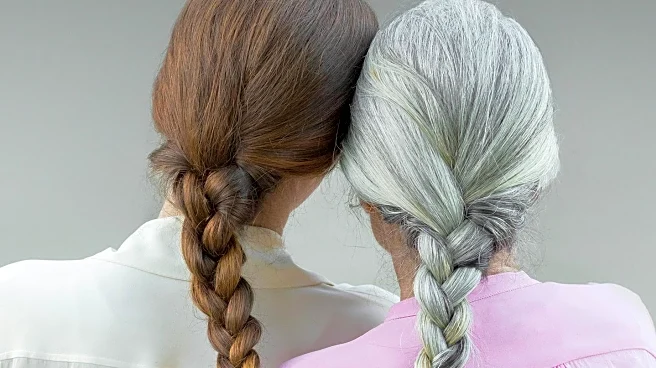What's Happening?
A study conducted by researchers at the University of Tokyo, published in Nature Cell Biology, has revealed that graying hair may be a natural defense mechanism against cancer. The research, led by Professor
Emi Nishimura and Assistant Professor Yasuaki Mohri, focused on melanocyte stem cells (McSCs), which are responsible for hair and skin pigmentation. The study found that when these cells are exposed to DNA damage, they undergo a process called senescence-coupled differentiation, leading to hair graying. This process is driven by the activation of the p53–p21 pathway and results in the removal of potentially harmful cells. However, when exposed to certain carcinogens, McSCs can bypass this protective mechanism, retaining their self-renewal capacity and potentially leading to melanoma.
Why It's Important?
The findings of this study are significant as they provide a new understanding of the relationship between aging, hair graying, and cancer. By identifying the molecular pathways that govern the fate of McSCs under stress, the research highlights the potential protective role of hair graying in eliminating cells that could lead to cancer. This insight could pave the way for new therapeutic strategies aimed at enhancing the body's natural defenses against cancer. The study also reframes the perception of hair graying and melanoma as interconnected outcomes of stem cell stress responses, rather than unrelated events.
What's Next?
Future research may focus on further exploring the molecular circuits identified in this study to develop interventions that could enhance the protective senescence-coupled differentiation process. Additionally, understanding how to prevent the bypass of this mechanism in the presence of carcinogens could lead to new cancer prevention strategies. The study's findings may also prompt further investigation into other age-related changes and their potential protective roles against diseases.
Beyond the Headlines
This research underscores the complexity of biological aging processes and their dual roles in both protecting against and contributing to disease. The study's insights into the antagonistic fates of stem cells under stress could have broader implications for understanding other age-related conditions and developing holistic approaches to health and longevity.











